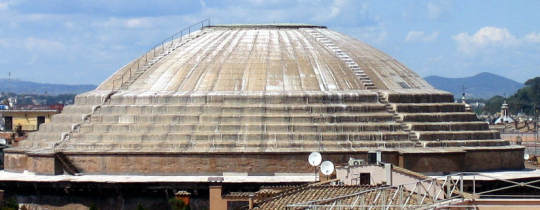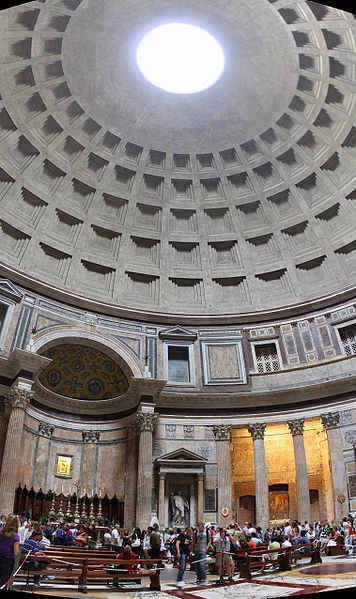 |
|||||||
Graphical Construction Glossary >> Concrete and Concreting. >> Roman Concrete
We are forever indebted to the Romans for their discovery of concrete as a new and revolutionary building material. The use of their techniques lead them to be able to construct buildings like the Pantheon that set a standard in size and design that has taken many hundreds of years equal. The Roman use of concrete or as they called it Opus Caementicium, allowed them to build roads, bridges and viaducts that allowed their civilisation to expand to the corners of the known world.
So when you are tempted to add a bit of extra water to a mix to make it easy to work, think about those early masters of construction, the Romans and the Opus Caementicium that they discovered.
If you didn't find exactly what you are looking for try this search tool that will search the site and the web. "What can be added to the happiness of a man who is in health, out of debt, and has a clear conscience? "When we build, let us think that we build for ever."John Ruskin 1819-1900 |
Hire Equipment  Furniture Fittings - Architectural Hardware - Electronic Locking Systems - Technical Hardware BuilderBill sponsorship Glossary Pages.Roof Glossary and Roofing Formwork Glossary and other tempory work. Hand Tools Glossary Power Tools Glossary Asbestos Glossary Woodwork Glossary Stair Glossary Concrete Glossary Masonry Glossary doors Glossary BuilderBill Books Building Maths  Stair Design  Asbestos Book |
||||||
|
|
|||||||
|
Please Note! The information on this site is offered as a guide only! When we are talking about areas where building regulations or safety regulations could exist,the information here could be wrong for your area. It could be out of date! Regulations breed faster than rabbits! You must check your own local conditions. Copyright © Bill Bradley 2007-2012. All rights reserved. |
|||||||

